Written by Joel Alderfer on January 19, 2022
In early 2020, Nan Weber Burch of Skippack, PA donated a significant group of related fraktur that had descended from her maternal grandmother’s ancestry in the Lower Salford-Skippack area. These include pieces from the Bergey, Tyson, Johnson, and Kulp families.
The oldest piece is a notenbuchlein, or manuscript hymn booklet, with fraktur-style bookplate, dated May 2, 1798, and made by Schoolmaster Andreas Kolb for student Elizabeth Bergey of Lower Salford Township. She was the daughter of Christian & Mary Bergey and
Continue Reading
Written by Forrest Moyer on June 24, 2021
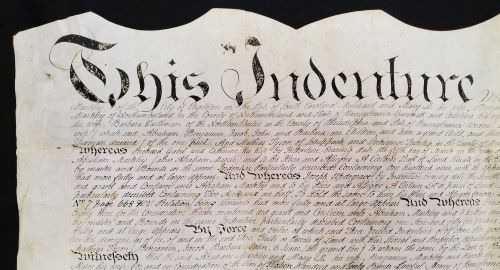
Recently Mary Jane and Hiram Hershey donated several old deeds, including one for the farm where her grandfather Abraham Mensch grew up, in Skippack Township. The address today is 4030 Mensch Rd, Schwenksville, just outside Skippack village.
The deed is from 1803, many years before the Mensch family owned the property. Abraham Markley (1723-1800) purchased this farm of 100 acres in 1751. After he died with no will in 1800, his heirs sold the farm to brother-in-law Mathias Tyson. Each sibling
Continue Reading
Written by Joel Alderfer on March 26, 2021
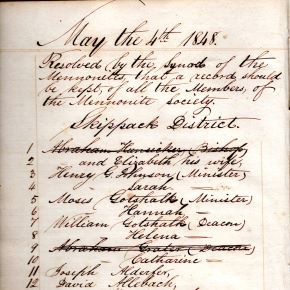
This article was published in the MHEP Newsletter in November 1995, and has been updated to include church records added to the collection since that time.
Researchers at the MHC Historical Library often ask, “Where are the early Mennonite church records?” or “What church records do you have?”
This is not a simple question. First of all, what does the researcher mean by church records? There are membership, baptismal, ministerial, burial records, alms records, property and land records.
I explain that generally,
Continue Reading
Written by Joel Alderfer on March 25, 2020
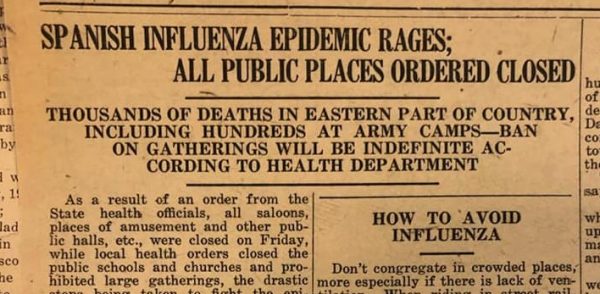
As we experience and restructure our lives during the coronavirus pandemic of 2020, it may be helpful to understand how our community in central Montgomery County, PA was impacted by the global Influenza Epidemic of 1918. Several diaries of local persons in the Mennonite Heritage Center collection offer some glimpses back to that time.
A little background
Some researchers believe that the influenza of 1918 originated on farms in western Kansas in the spring of that year. Most scientists and scholars now
Continue Reading
Written by Forrest Moyer on November 6, 2019
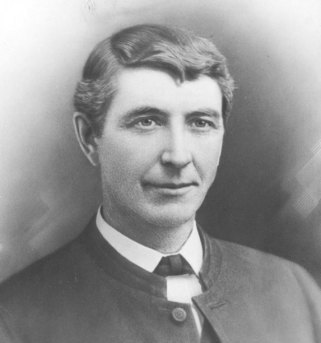
John S. Coffman (1848-1899) of Elkhart, IN was one of the first evangelists to hold a series of meetings in Franconia Mennonite Conference, in November 1896. His tour lasted three weeks, during which he preached in all but one congregation in the conference. In his diary, he recorded impressions of the places and people he met, giving us a rare view of local Mennonite culture. The diary is archived at the Mennonite Church USA Archives in Elkhart and was published
Continue Reading
Written by Forrest Moyer on August 22, 2019
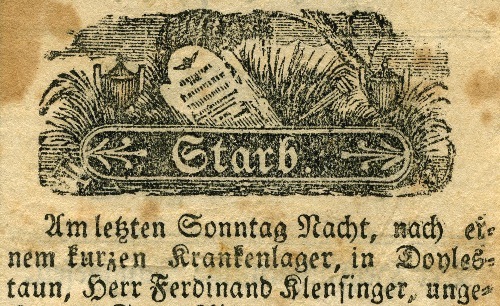
In January 2018, the MHC received a surprise package in the mail from Lois Beun Callaghan of Santa Fe, NM, a descendant of John Meyer/Moyer (1799-1877) of Skippack Township. It contained several 19th century German newspapers with Meyer’s name on them — Der Morgenstern (Doylestown, PA), Der Neutralist (Skippack, PA), and Montgomery County Presse (Lansdale, PA) — and a separate file of hundreds of obituaries (and some marriage notices) clipped from these papers in the years 1844-1893. We’re thankful to
Continue Reading
Written by Forrest Moyer on June 6, 2019
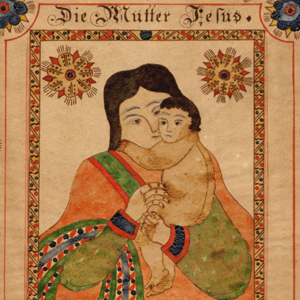
Mennonites, like other Protestants, do not typically venerate special or powerful “saints” canonized by the Roman church, but occasionally, Mennonites and other Pennsylvania Germans would appeal to saints in medieval prayers associated with folk healing. Saint Mary, the mother of Jesus, was especially present in these prayers.
In 1830, a local Mennonite created a beautiful piece of fraktur titled “Die Mutter Jesus [The Mother of Jesus].” The Mennonite Heritage Center has exhibited this piece in the past, and happily we were
Continue Reading
Written by Joel Alderfer on February 22, 2019
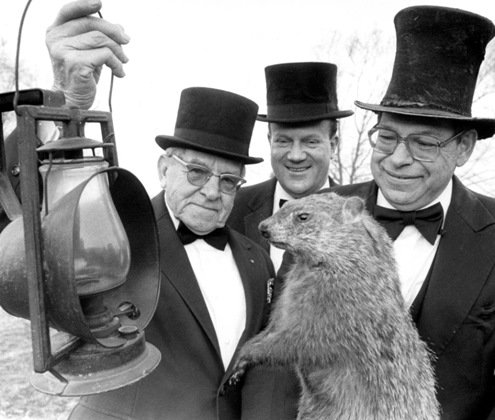
The records, photos and some artifacts of Groundhog Lodge #2 “on the Skippack” were donated to the Mennonite Heritage Center last fall, after the group disbanded earlier in 2018. This Grundsow Lodsch, based in the Souderton-Harleysville area, started in 1937, held its first public Fersommling (gathering and banquet) in February 1938, held its 81st annual banquet in February 2018, and then decided to disband. It was the second of the lodges (or clubs) organized in the wider Groundhog Lodge movement
Continue Reading
Written by Forrest Moyer on October 4, 2018
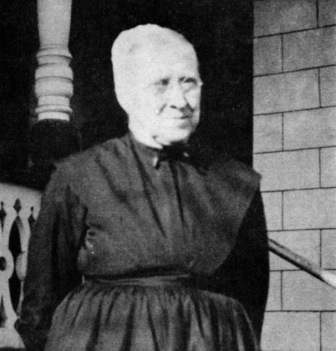
This article was first published in the MHEP Newsletter in June 1978. Photos are from Willoughby Moyer’s booklet on the Bean family (1975), unless otherwise noted.
Introduction
Anna W. Kulp was born October 7, 1865 near Harmony Square, later known as Creamery, in Skippack Township. Her parents were Isaac K. Kulp (1822-1892) and Susanna H. Williams (1823-1871). When she was six years old, her mother died, and young “Annie” went to live with Isaac K. Gottshall and his wife, Sarah B. Kulp,
Continue Reading
Written by Forrest Moyer on May 16, 2018
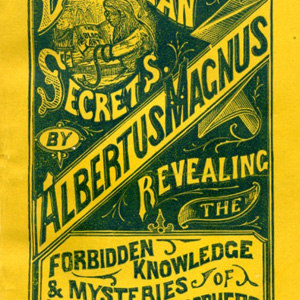
In February 1979, the MHEP Newsletter published notes from a talk by Mennonite pastor Gerald Studer on the topic of “powwowing”—In German, Braucherei—a combination of faith healing and folk medicine. This ancient practice brought by Pennsylvania Germans from Europe has been preserved in pockets of the American countryside to the present day. Opinions have varied in the Pa. German community about the effectiveness and propriety of powwowing. Individuals from all religious groups—Lutheran, Reformed, Mennonite, Brethren, Evangelical, etc.—made use of powwow
Continue Reading









